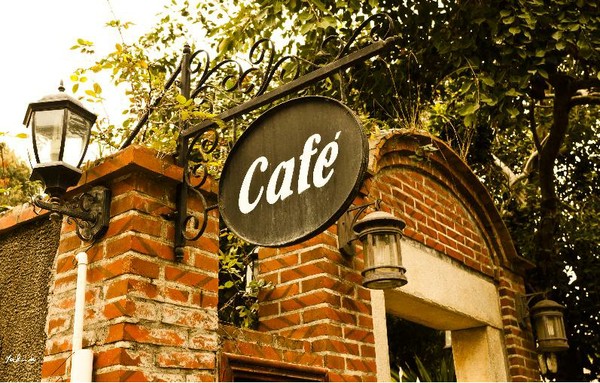Starbucks Diaoguang Man Coffee: the tripod is dominated by or.
At present, China's per capita annual coffee consumption is 5 cups, which is far lower than the level of about 300 cups per capita in Japan and South Korea, and the world average is about 240 cups. However, coffee consumption in China continues to grow at an annual rate of 15% to 20%, making it the world's most potential coffee consumer. In the current Chinese market, there are three forces active in China, Europe and the United States, and what preparations have they made in different ways for the upcoming market war reopened by the Internet?

China's coffee market is entering a white-hot stage
Usually, the slowdown that follows a period of rapid economic growth is a time of explosion in restaurants, cinemas and cafes. Economic development will bring about a general improvement in living standards, while slowing down the pace of development will allow people more time and impulse to think and enjoy life. China is entering this phase.
In 2012, coffee consumption in China was about 130,000 tons, and coffee consumption in China continued to grow at an annual rate of 15% to 20%, making it the most potential coffee consumer in the world. At present, China's per capita coffee consumption is 5 cups per year, which is far lower than that of Japan and South Korea, with an average of about 300 cups per person per year.
Starbucks regards the Chinese market as the "second home market", which shows the great potential of the Chinese market. In 2014, coffee consumption in China reached more than 500,000 tons, and the market retail sales reached nearly RMB 60 billion. The growth rate of the Beijing market alone has reached 18%, with 13600 cafes and 2200 coffee-related enterprises nationwide, employing 500,000 people. In the current Chinese market, there are three forces active in China, Europe, America and Korea. They are preparing for the upcoming market war in different ways.
Carving Time: The Internet Changes Competitive Strategy
Starbucks, which claimed to be a coffee e-commerce platform a few years ago, has repeatedly postponed its online plan and finally decided to focus its online business on "membership services". December 15, 2014, let the coffee chain industry surprise is,"carving time"(hereinafter referred to as "carving light") this 17-year-old local coffee chain, in just six months to build a professional coffee website.
On the day Hello coffee was officially launched, we saw almost all the world's top coffee brands, ingredient providers, coffee-making appliances, coffee accessories, and even competitors 'banners on the literary page. On this website, it can be seen that Carving Time is trying to break the shackles of competition and join hands with coffee brands to create a focused and perfect supply chain for coffee and its surrounding formats.
Zhao Keyong, CEO of Diaoguang: "In the 17 years of operation, we gradually discovered that how to select only their own coffee taste from thousands of coffee categories, China has not had a truly professional and perfect platform to provide guidance." We firmly believe that those who know how to appreciate coffee, will know how to taste coffee, will become the Bole who appreciates coffee. Our original intention is very simple, that is, we want our friends who love coffee to stop worrying about the source and safety, select more professionally, find a platform full of coffee feelings, taste coffee together, and evolve into a Bole who understands life and coffee." In 1997, Taiwan boy Zhuang Zi opened the first sculpture time cafe outside the North Gate. This small shop with background music mainly JAZZ or Bossa Nova became a gathering place for Chinese intellectuals and literary youth. In 17 years, Carving Time has opened more than 40 branches in 20 cities across the country and completed two rounds of financing. Under the big brand of carving time, it has formed a group enterprise with sub-brands such as "Shangda Public Relations Company","Boundary Design Company","Qige Clothing","Life Market","Coffee Academy" and "Hello Coffee". Founder Zhuang Songlie does not deny that they are fully prepared for "listing".
"If it were Taiwan or the New Third Board, we would have been able to go public a few years ago, but we don't want to go public for the sake of listing," said Zhao Ketong, CEO of Diaoguang. Zhao Ke Tong and Zhuang Song Lie's goal is to make carving time a "century-old shop", but under the theme of "slow style", Internet practice is achieving their "fast rhythm" in business. The idea of "building a website" was born in June 2014. Zhao Keyong, CEO of Diaoguang, added: "Many of my friends are in the Internet circle, and communicating with them makes me feel that the 'change' of the traditional industry is imperative." Many of our peers think that there is a shop in Tmall and Jingdong that is Internet-based. I think we have to do it properly." Hello coffee's team was only built in July and officially launched on December 15. Zhao Xin, head of Hello coffee's team, stressed that this is China's first coffee B2C website, and there will be no competitors in the next year.
"The coffee industry is not mainstream enough in China. There will be no more than 100 good coffee merchants in Beijing. Now 60 have signed Hello coffee. We want to be a professional coffee vertical e-commerce company. In addition to Starbucks and other large-scale chain stores, those coffee shops with special characteristics will become our merchants." At present, Hello coffee has a three-dimensional warehouse of 1000 square meters, signed four logistics companies, the next month, APP client will also be online. When Diaoguang opened its first cafe, Starbucks had not yet entered China, Zhao said. Today, Diaoguang's competitors are all over the country, and the increasingly mature coffee consumer market attracts coffee brands of different styles to join the enclosure war. In addition to playing a good cultural card, local cafes should constantly cultivate the market.
Fortunately, they learned to leverage the power of capital and the Internet to provide a bigger stage and influence for brands. Competition cannot be limited to one dimension.
Starbucks: Marketing Strategy under Fast Consumption
American coffee chain stores led by Starbucks have blossomed everywhere in major commercial buildings and office buildings in China. It is undeniable that among the chain coffee brands, there is no one to the right. Although COSTA tries its best to imitate and follow, it is also eating into Starbucks 'market, but it has not been able to form a competitive force against it.
Starbucks was born in Seattle in 1971, formerly a coffee bean supplier. After running a small green cafe, founder Schultz unexpectedly achieved commercial success and dominated the coffee chain market 20 years later, becoming a global enterprise. Like all American fast food restaurants, Starbucks has found in marketing practice that Americans are not as willing to hold a cup of coffee in a coffee shop as French and Italians are. Hemingway, Balzac, Freud these thinkers, writers of time, more willing to spend in the left bank of the "Flower God" cafe. Americans in the 1970s were struggling, fast-paced, and believed in the value of "time is money."
For operators, the long stay of guests means that sales slow down, and sales can only continue to increase if guests are moved. The process of making coffee is also extremely simplified. Starbucks uses a fully automatic coffee machine that takes only two minutes to make a cup of coffee. The new products of each season are blended through "fruit juice". The time from receiving a guest to producing a cup of coffee and delivering it to the guest is precisely controlled.
Starbucks has few seats, and the seating and environment are not comfortable, because Starbucks encourages customers to "take away". Carry out the strategy of using takeaway cups, and constantly improve the design and functionality of takeaway cups to make customers more willing to walk out of cafes with paper cups. This model also contributes to Starbucks 'most effective takeaway marketing method-star effect. In fashion magazines, Britney Spears, Beckham, Anne Hathaway, Rihanna…well, you have to admit, all the stars you know like to hold a Starbucks in their hands when they shoot on the street. Starbucks paper cups are the best decoration, it makes their state look more casual, and Starbucks seems to mean taste. Indeed, in the coffee world, only Starbucks has achieved a complete integration with fashion, and even become a measure of whether a person is fashionable.
China has become Starbucks 'largest consumer market in addition to the United States. Schultz mentioned the Chinese market three times at the shareholder meeting, saying that Starbucks plans to open 1500 stores in 75 cities in China by 2015. Seeing China's huge market capacity, Starbucks has also constantly adjusted its strategy. Now Starbucks has taken back almost all of its franchised stores, all of which are direct-sale stores except for individual cooperative stores in Shanghai. Starbucks Asia Pacific Director "Operating direct-sale stores can better control service and product quality, and at the same time control the pulse of the entire Chinese market." Only standardized management can protect Starbucks 'ambition and expansion.
Korean chain: step up enclosure, looks beautiful

Standardization has always been a nightmare for chain cafes, especially in the Chinese market. It is precisely because Starbucks saw the shortcomings of its early franchise stores that it withdrew its global franchise rights and created global standard products and services. However, Korean chain cafes are still immersed in the franchise profit model, unable to foresee future crises.
As a country where coffee beans are not grown, South Korea is the 13th largest coffee country in the world. Ten years ago, South Korea imported 1.5 million bags of coffee beans, about 80,000 tons, and consumed 1.6 kilograms of coffee per capita. In South Korea, the sales performance of local coffee chains makes even Starbucks difficult to catch up with. South korean coffee chains have a similar business model: coffee flavors that are close to asian eating habits, quick and easy waffles, toast, sandwich meals, and comfortable spaces. Caffebene, MAAN COFFEE, ZOO COFFEE, these Korean brands are growing at the fastest speed in Korea, and at the same time entering Japan, Taiwan, China, Vietnam and other countries to divide the local market. At the beginning, Caffebene started from a capital of 1 billion won in South Korea, reached annual sales of 200 billion won within two years, and is expected to expand to 1680 in 2015.
Jin Shanquan, president of Caffebene: "Caffebene focuses on young women in China. Aiming at college students aged 20~30, high-income white-collar workers and fashion-leading young customers, Caffebene will develop coffee and tea products suitable for Chinese consumers 'tastes, dishes with Chinese flavors, etc." Man coffee, which quickly occupied the market in China, was not a native Korean brand, but a masterpiece of Korean Xin Zixiang in China. This Korean man who lives in Wangjing sees a void in the Chinese market.
"In 2007, the number of cafes in Korea was 2800, and seven years later, it has reached 18000 this year. For China, this is undoubtedly the golden age of cafe development." In the first two years of creating Man Coffee, there were more than 60 franchised and chain stores in Beijing market, which is amazing performance for new brands. Xin Zixiang, founder of Man Coffee, believes that the reason why Man Coffee wins consumers 'favor is that, in addition to its unique environment, Man Coffee has chosen some strategies that are different from its competitors. In Starbucks and other stores, coffee is the protagonist, but Korean coffee shops, almost all with unique decoration style as a gimmick, here consumer groups are more extensive than Starbucks and so on.
Therefore, in Man Coffee you often see people who are focusing on work, studying, and discussing work. Comfortable environments make consumers reluctant to leave, and such strategies are just the opposite of Starbucks 'mobile consumption. Located in the best location of Wanliu East Road Man Coffee, business is always very hot, franchisees revealed, his two-story coffee shop total area of about 1000 square meters, early investment as high as 20 million yuan, including joining fees, decoration fees, equipment materials costs and so on.
Diffuse coffee franchisees: "Diffuse coffee to franchisees threshold is much higher than Caffebene, franchisees require to open 5 stores of economic strength, must get the best lot in the park, college or community, must be the upper and lower two floors of property." Man Coffee is responsible for providing raw materials and training for meals and drinks, and the decoration is also designed and executed by Man Coffee headquarters. Since it opened a year ago, the daily flow of water here is between 6,000 and 10,000 yuan." For profit-making coffee franchisees: "My shop in Shunyi is better than here, and there is basically a leveling, and when this store can recover the cost, I don't know. Open a cafe, and it's still the location." The profit model of Korean coffee chain enterprises is almost the same_recruiting franchisees. Take Caffebene as an example. In South Korea, except for a few direct-sale stores, more than 95% of Caffebene stores are franchised. Among them, 50% of franchisees (half of companies and franchisees) are the main mode. Since entering China in 2012, Caffebene has quickly opened 400 stores, still mainly to join.
However, by July of this year, we saw Caffebene's closing trend, which also contained the disadvantages of Korean franchise chain cafes. Take a 200-square-meter store in Caffebene Beijing as an example, the franchise fee is about 3 million yuan, which means that the franchisee's initial investment is very large, plus Caffebene's unified standard of 3000/square meter decoration costs, mandatory purchase of Caffebene equipment costs higher than the market price (For example, Kimberly M39 double-headed semi-automatic coffee machine, Taobao price of about 70,000 yuan, franchisees have to pay 120,000 yuan), food and beverage raw material costs, etc., open a Caffebene franchise store, the initial investment is between 3 million and 5 million. Even if you open a store smoothly, in the middle of the operation, franchisees and companies will have to allocate income according to 49% and 51% of investment, in addition to a monthly management fee of 4%.
Korean coffee shops usually look beautiful. And franchisees 'days are usually very difficult. Although Korean cafes achieve the purpose of product standardization with unified purchase, the purchase cost higher than the market price makes franchisees start to think of other methods, such as private purchase and group purchase, resulting in the result that the taste of each store is not uniform. Even so, franchisees may not bear the pressure of rent, management fees, etc., and eventually close stores in order to reduce losses.
Such a closed-shop effect, like dominoes, will push down Caffebene's franchise plans in China. Caffebene went from its original slogan: "5000 chain stores in China by 2015, then listed in Hong Kong"; adjusted to "1500 chain stores in China by 2015, then listed in Hong Kong"; followed by: "1000 chain stores in China by 2015"; until recently: "Become a world-renowned coffee chain brand by 2015".
Behind the constantly lowered publicity content, it is the defects of Korean coffee brand chain franchise model. What kind of coffee shop makes money? Zhao Ke Tong said: "Coffee shop is slow business, want to make fast money in this line of people, will smash the brand."
(Editor/World Online Merchant Wu Jianying, this article comes from Phoenix Finance and Economics, edited by i World Online Merchant, please indicate the source for reprinting)
Important Notice :
前街咖啡 FrontStreet Coffee has moved to new addredd:
FrontStreet Coffee Address: 315,Donghua East Road,GuangZhou
Tel:020 38364473
- Prev

Coffee bean certification body Rainforest Certified Coffee Rainforest Alliance certificatio
Rainforest certification Rainforest Alliance certification Rainforest Alliance certification Frog beans Rainforest Certification logo has an obvious frog, Rainforest Alliance certified coffee, also known as frog beans. Rainforest Alliance RA (Rainforest Alliance) certification refers to a farm that meets the standards set by the Rainforest Alliance, and the Alliance will conduct research on the farm and its surrounding ecosystems.
- Next

The development trend of cafes in China as headhunters
Henan Business Daily reporter Hou Jianxun / Yang Yan, convener of Huigu Coffee: I just want to turn the cafe into a base for entrepreneurs to communicate with headhunters. Now many people use Huigu Coffee, founded by 21 shareholders, called crowdfunding Cafe, but Yang Yan, the convener named Huigu Coffee in Zhengzhou, does not think so. Because of their coffee.
Related
- What brand of black coffee is the most authentic and delicious? what are the characteristics of the flavor of the authentic Rose Summer Black Coffee?
- Introduction to the principle and characteristics of the correct use of mocha pot A detailed course of mocha pot brewing coffee is described in five steps.
- Which is better, decaf or regular coffee? how is decaf made?
- How much is a bag of four cat coffee?
- How about four Cat Coffee or Nestle Coffee? why is it a cheap scam?
- Which is better, Yunnan four Cats Coffee or Nestle Coffee? How about cat coffee? is it a fake scam? why is it so cheap?
- How about Cat Coffee? what grade is a hoax? which instant coffee tastes better, four Cat Coffee, Nestle Coffee or G7 coffee?
- Process flow chart of coffee making-Starbucks coffee making process what coffee tastes good at Starbucks
- The top ten best coffee beans in the world Rose summer coffee or Tanzanian coffee tastes good
- Yunnan four cat coffee is good to drink?_four cat coffee is a big brand? four cat blue mountain coffee is fake?

